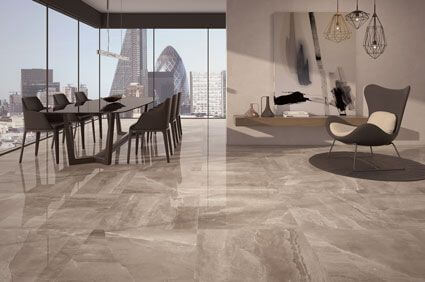
Understanding Tile Grip Ratings: A Comprehensive Guide

When choosing tiles for various spaces, one crucial aspect to consider is their grip rating. Tile grip ratings indicate the slip resistance of the tiles and help determine their suitability for different areas. Understanding the different grip ratings is essential to ensure the safety and functionality of your floors. In this blog post, we will explore the various tile grip ratings and their significance, empowering you to make informed decisions when selecting tiles for your specific needs.
-
What is a grip rating? A grip rating, also known as a slip resistance rating, measures how slip-resistant a tile is when exposed to different levels of moisture or contaminants. This rating is crucial in areas where the floor may get wet, such as bathrooms, kitchens, or outdoor spaces. The higher the grip rating, the more slip-resistant the tile is.
-
R Ratings: The most common grip rating system is the R rating, which ranges from R9 to R13. The R rating indicates the coefficient of friction between the tile surface and a standard test surface. Here's a breakdown of the R ratings and their respective applications:
-
R9: These tiles provide minimal slip resistance and are suitable for dry areas, such as bedrooms or living rooms.
-
R10: Tiles with an R10 rating offer a moderate level of slip resistance. They are suitable for areas where occasional moisture or spills may occur, such as hallways or residential kitchens.
-
R11: Tiles with an R11 rating provide enhanced slip resistance and are designed for areas with regular exposure to moisture, such as outdoor spaces or commercial kitchens.
-
R12: These tiles offer a high level of slip resistance and are suitable for areas prone to frequent wetness or where additional traction is necessary, such as public swimming pool decks or industrial kitchens.
-
R13: Tiles with an R13 rating provide the highest level of slip resistance. They are ideal for areas where there is a high risk of slipping, such as commercial kitchens or industrial environments with oil or grease present.
-
Other Grip Rating Systems: Apart from the R rating, some countries may use alternative grip rating systems. For example, the UK uses the Pendulum Test Value (PTV), while the USA utilizes the Dynamic Coefficient of Friction (DCOF) rating. These systems measure slip resistance using different methods but ultimately provide similar information on the tiles' slip resistance properties.
-
Additional Factors to Consider: While grip ratings are crucial, other factors also contribute to the overall slip resistance of tiles. These include the texture of the tile surface, the presence of a suitable grout, and regular cleaning and maintenance practices. It is important to consider these factors in conjunction with the grip rating to ensure a safe flooring solution.
Conclusion: Tile grip ratings play a significant role in determining the slip resistance of tiles and their suitability for different environments. By understanding the various grip ratings, you can make informed decisions when selecting tiles for your specific needs. Remember to consider factors such as the tile's texture, grouting, and maintenance practices to ensure a safe and secure flooring surface. Prioritizing slip resistance will not only enhance the functionality of your space but also promote safety for everyone who uses it.


